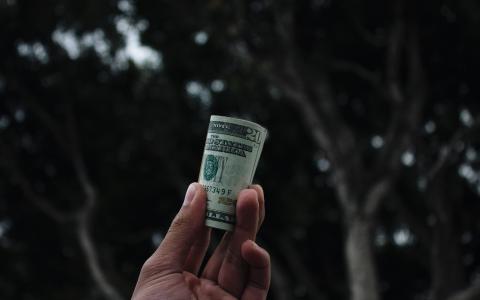
The Federal Reserve is taking extraordinary steps to stabilize the U.S. economy, which is reeling from the economic damage caused by the coronavirus—but will consumers see any impact from the billions it is spending?
- On Monday morning, the Fed unveiled a sweeping set of new programs designed to prop up markets: it will buy Treasury securities and mortgage-backed securities in whatever amounts are needed to support “smooth market functioning” and launch new lending programs worth a collective $300 billion to help companies affected by the slowdown.
- The goal of all this activity is to pump up liquidity— in other words, it’s all about the cash.
- “With everybody hunkered down in their bunkers, that money's not circulating,” says James Angel, a finance professor at Georgetown University; to keep the economy humming, banks need to be able to lend money and businesses need to be able to access it.
- So will this help the consumer at all? “Time will tell,” says Angel. In an ideal world, the Fed’s steady stream of cash helps banks and businesses access enough money to stay afloat and pay workers. “That appears to be the plan to weather this storm.”
- How much of this the consumer actually sees in action, on the other hand, is “probably very little,” says Jeanette Garretty, chief economist at Robertson Stephens Wealth Management, because the Fed’s role in maintaining liquidity happens mostly behind the scenes.
- What consumers will surely notice are the stimulus packages being proposed by the White House and Congressional Democrats which could include small business retention loans, checks sent directly to Americans (Treasury Secretary Mnuchin said the average family of four can expect to receive $3,000) and expanded unemployment insurance for workers laid off as a result of the virus.
Crucial quote: Angel sums up the situation like this: “We are facing a liquidity squeeze in the economy in a lot of businesses, especially with a lot of smaller businesses,” he says. “You think of that local pilates studio that has to shut down indefinitely. They still have to pay the rent. They still have to pay for the electricity and utilities and all that stuff. They may even try to pay their employees if they're ill...but there's a lot of these small businesses that are cash flow constrained. A lot of them may not be able to survive a month or two of no business.”
Key background: In recent days, the Fed has also cut interest rates to almost zero, said it’s prepared to inject trillions of dollars into the overnight repo market (that’s when the Fed uses cash to buy securities from a financial institution which agrees to repurchase them later on with interest), slashed bank reserve requirements and agreed to buy short term debt from companies with good credit ratings (so they can get cash directly from the Fed rather than a commercial bank).
This article originally appeared on Forbes.



